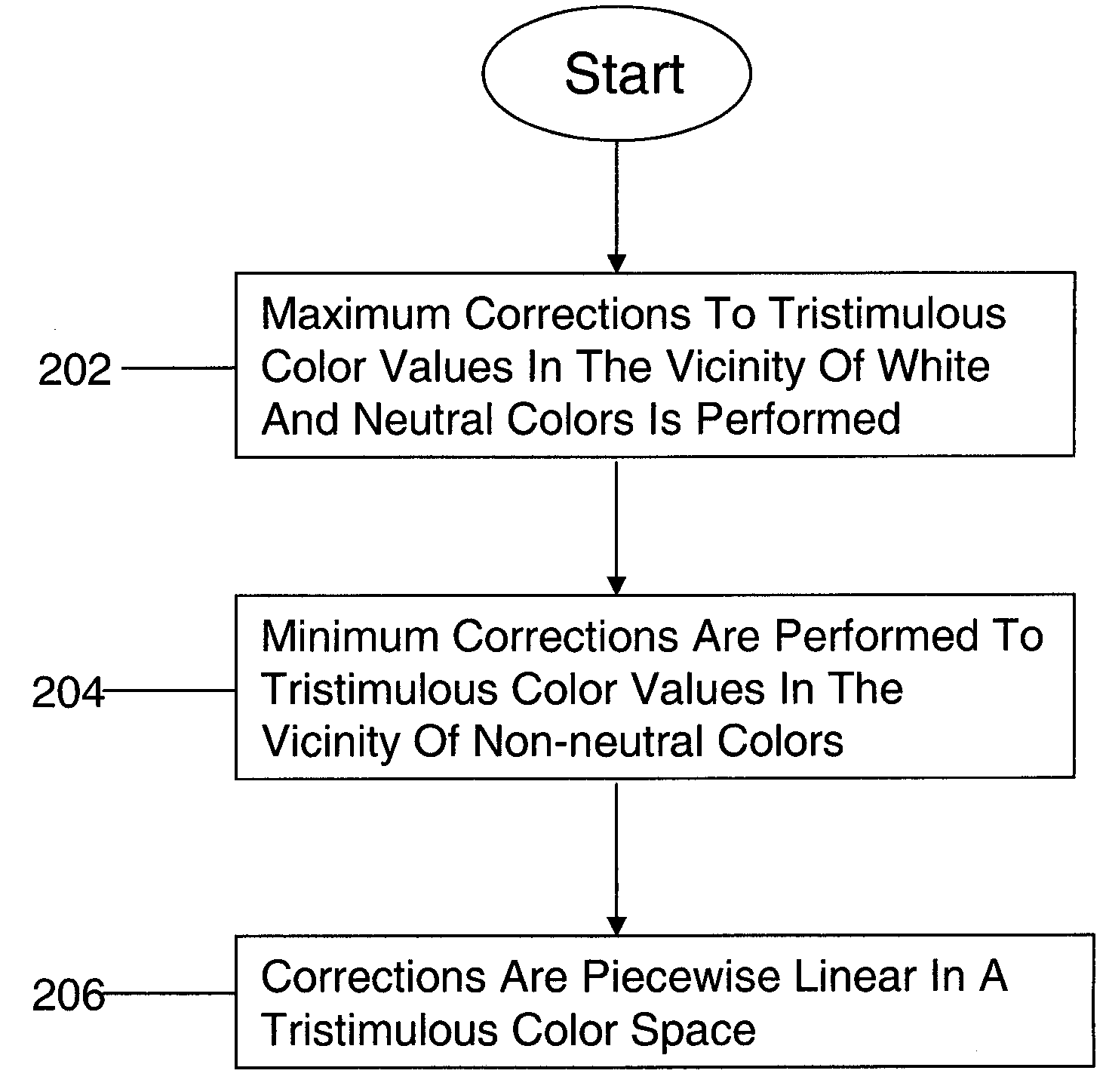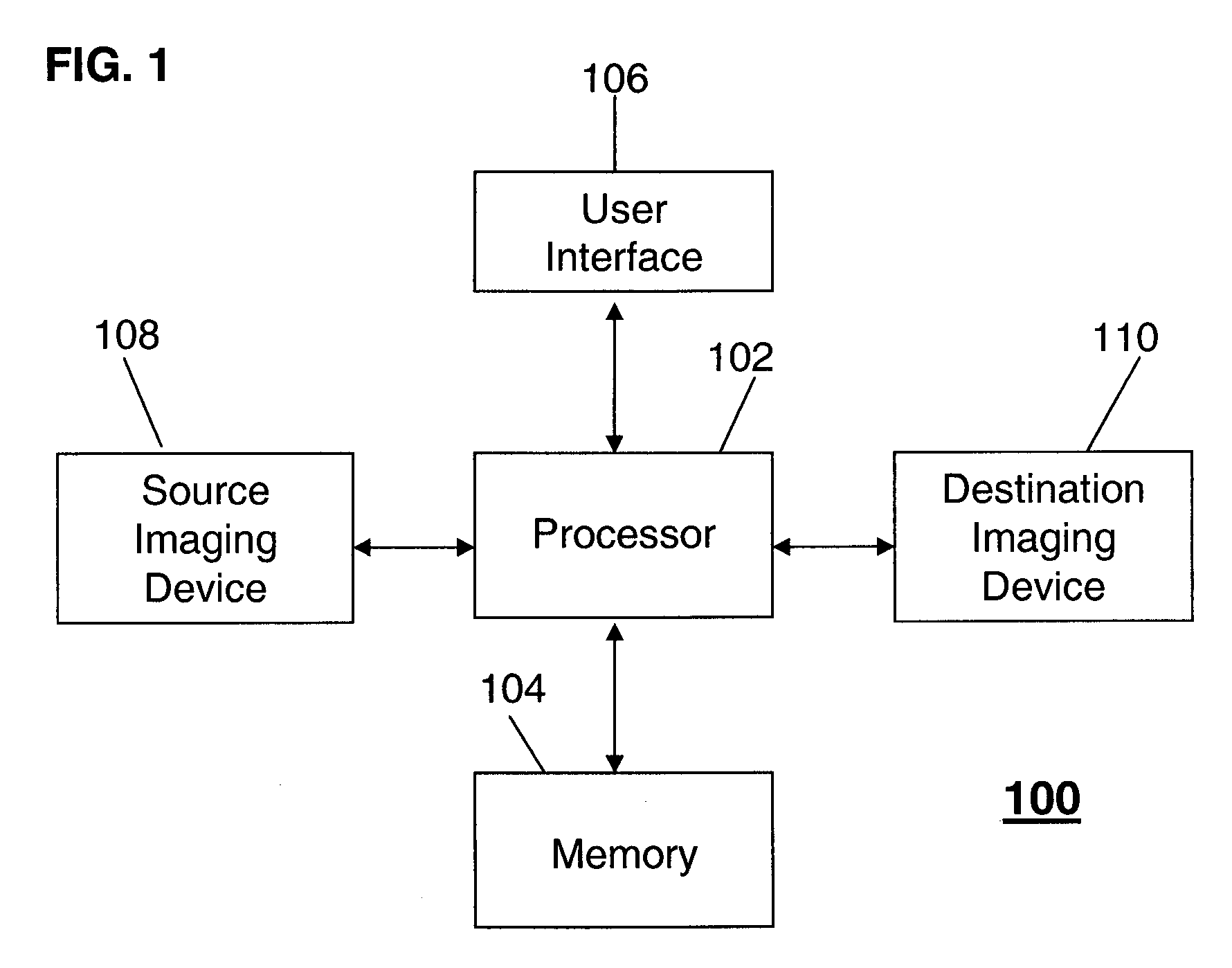Method and apparatus for chromatic adaptation
- Summary
- Abstract
- Description
- Claims
- Application Information
AI Technical Summary
Problems solved by technology
Method used
Image
Examples
Embodiment Construction
[0012]The present description is directed in particular to elements forming part of, or cooperating more directly with, methods and / or apparatus in accordance with the invention. It is to be understood that elements not specifically shown or described may take various forms well known to those skilled in the art.
[0013]In one embodiment of the invention, a method of chromatic adaptation that appears to provide some improvements over prior art adaptation techniques will be described. Most modern chromatic-adaptation models can be traced back to the hypotheses proposed by Johannes von Kries, the modern interpretation of the von Kries hypothesis in terms of chromatic-adaptation model are expressed in Equations 1-3 as follows:
La=kLL Eq. 1
Ma=kmM Eq. 2
Sa=kSS Eq. 3
where L, M, and S represent the initial cone responses; kL, kM, and kS, are the coefficients used to scale the initial cone signals (i.e. gain control); and La,Ma, and Sa are the post-adaptation cone signals. Typically a matrix...
PUM
 Login to View More
Login to View More Abstract
Description
Claims
Application Information
 Login to View More
Login to View More - R&D
- Intellectual Property
- Life Sciences
- Materials
- Tech Scout
- Unparalleled Data Quality
- Higher Quality Content
- 60% Fewer Hallucinations
Browse by: Latest US Patents, China's latest patents, Technical Efficacy Thesaurus, Application Domain, Technology Topic, Popular Technical Reports.
© 2025 PatSnap. All rights reserved.Legal|Privacy policy|Modern Slavery Act Transparency Statement|Sitemap|About US| Contact US: help@patsnap.com



